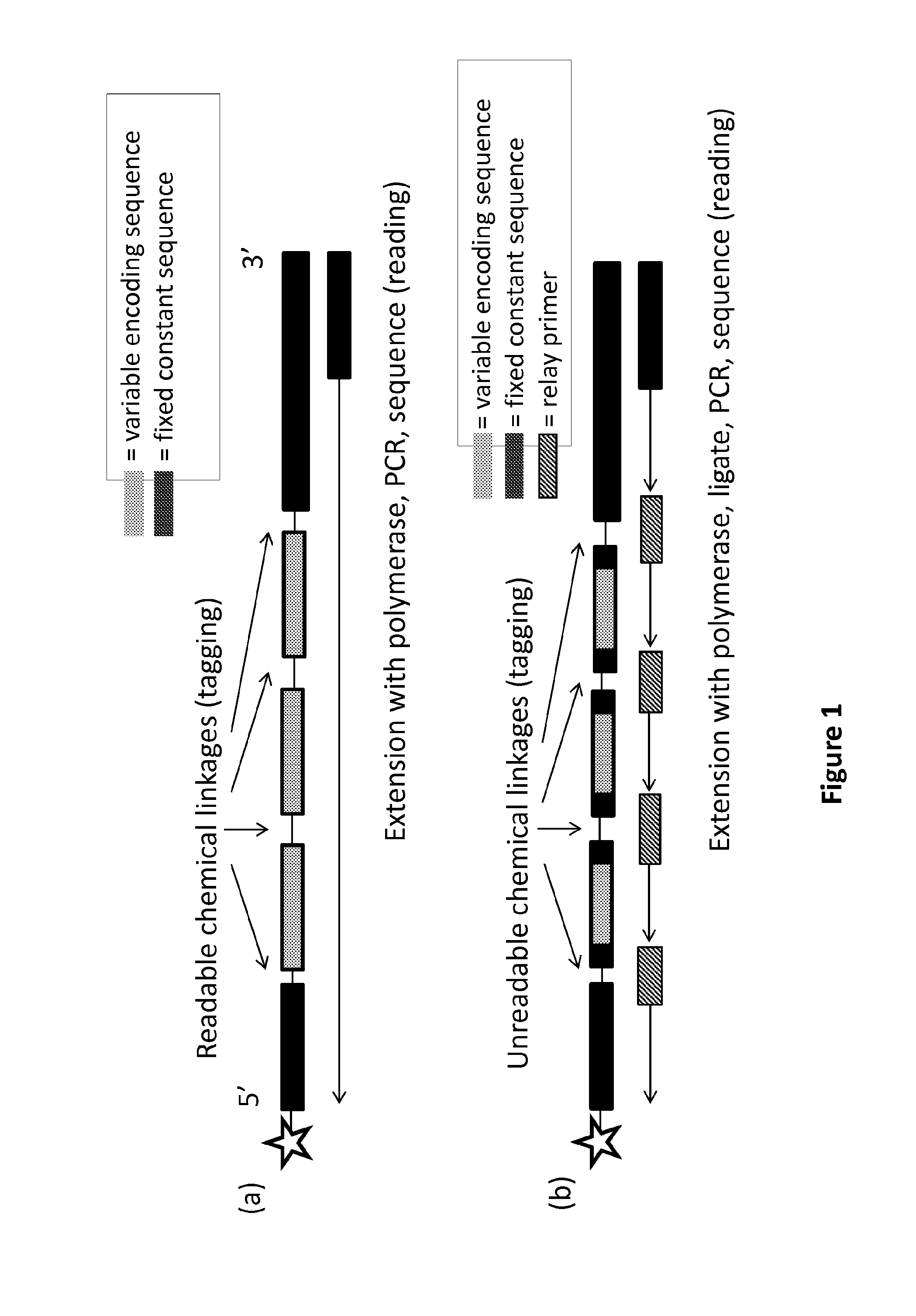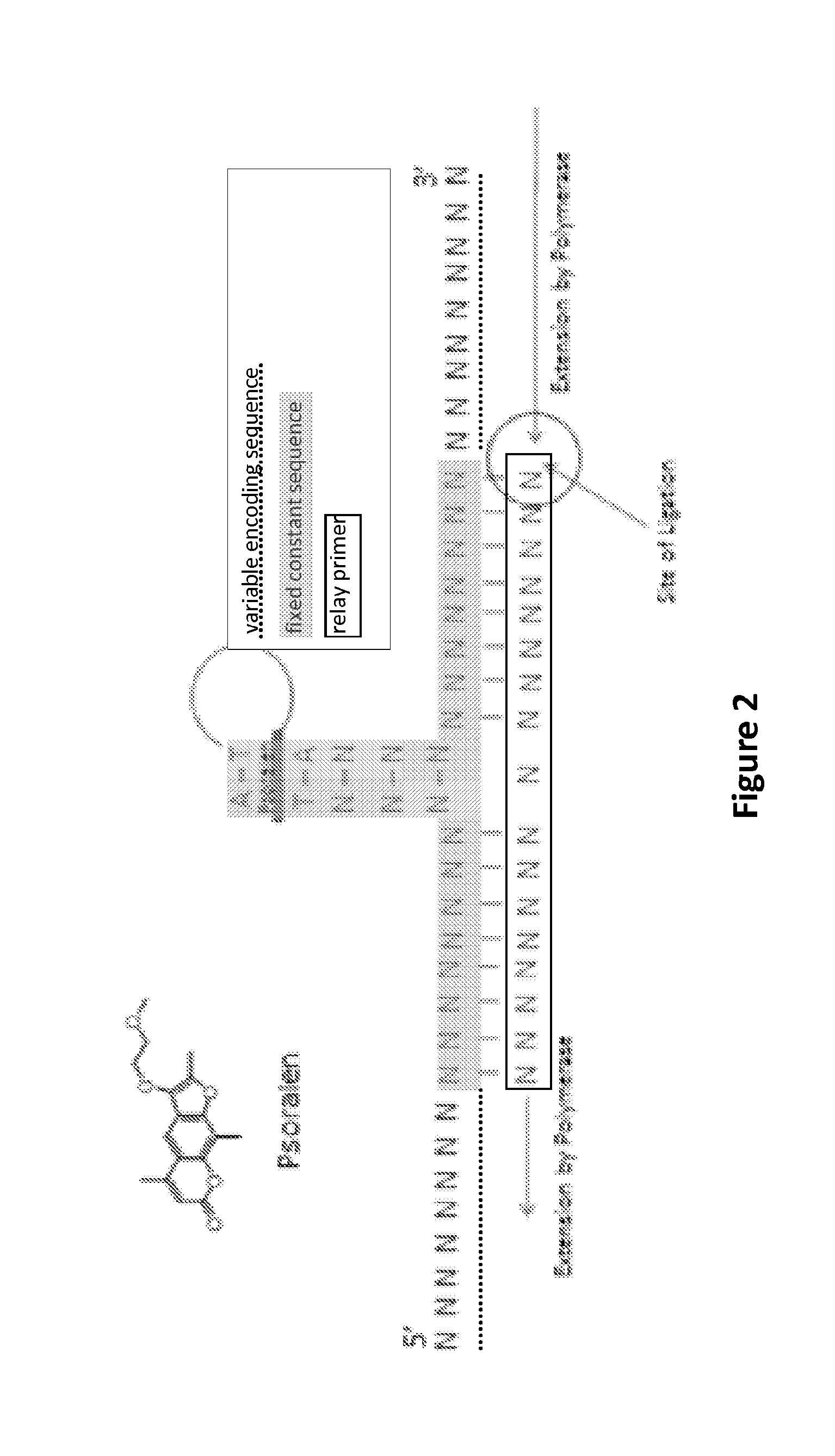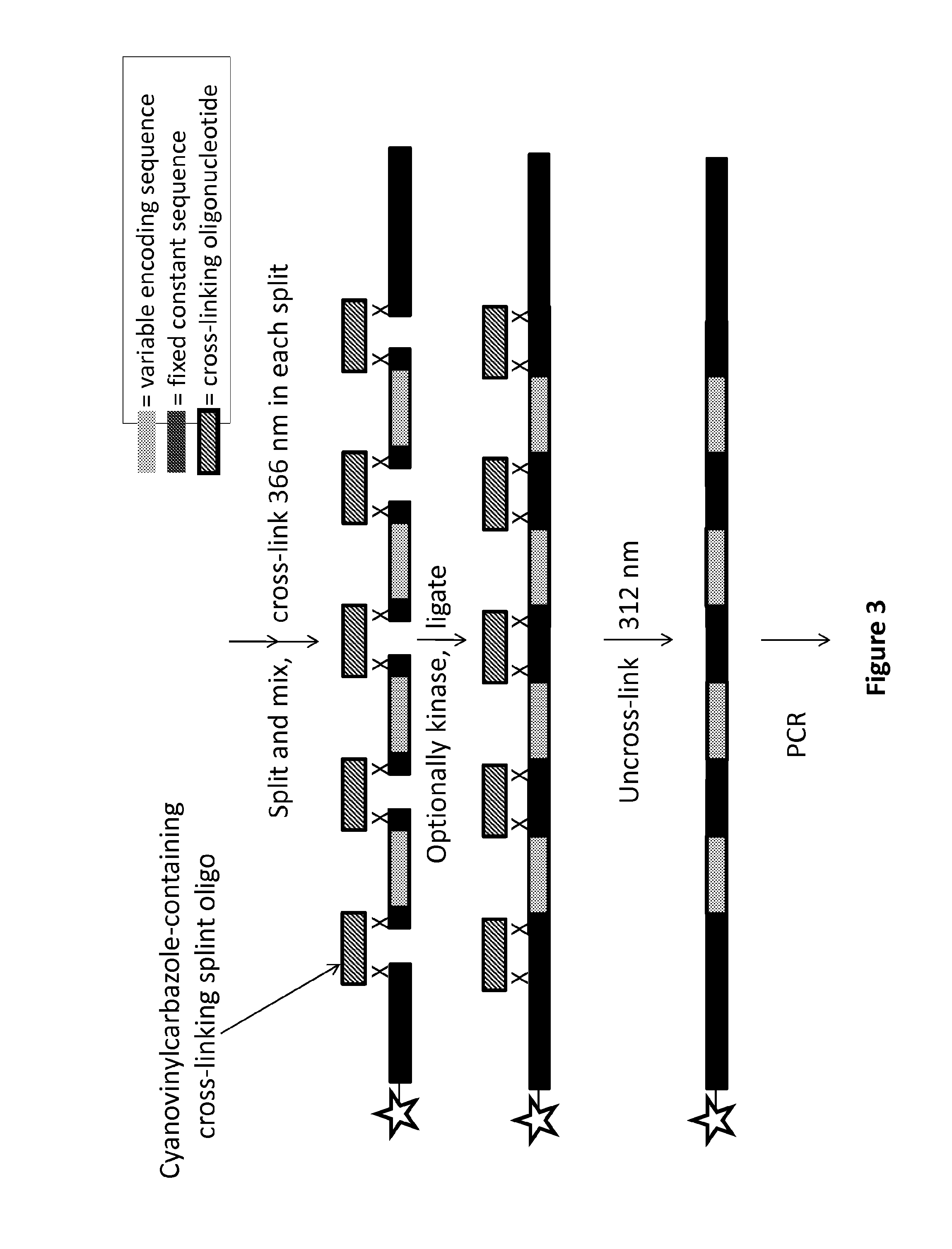Dna-encoded libraries having encoding oligonucleotide linkages not readable by polymerases
a technology of oligonucleotide linkage and library, applied in the field of dna-encoded libraries of compounds, can solve the problems of complex libraries that must be synthesized and deconvoluted, and difficulties may arise when creating libraries with all of these beneficial attributes, and achieve the effect of reducing the incidence of mis-tagging
- Summary
- Abstract
- Description
- Claims
- Application Information
AI Technical Summary
Benefits of technology
Problems solved by technology
Method used
Image
Examples
example 1
General Strategy for Complexes
[0242]The complexes of the invention can be formed to include one or more linkages which a polymerase has reduced ability to read or translocate through. For example, complexes can be formed to include (from the 5′ to 3′ direction) a chemical entity (star), a fixed constant sequence (e.g., a headpiece), followed by three variable encoding sequences (e.g., three tags), and another fixed constant sequence (e.g., a tailpiece), where the linkage between the fixed constant sequences and variable encoding sequences can be unreadable (FIG. 1B).
[0243]Unreadable linkages can be formed by any useful moiety or functional group. A non-limiting example is psoralen (FIG. 2), which can form an unreadable linkage between the 5′- and 3′-connectors.
[0244]Unreadable linkages can be formed by a cross-linking oligonucleotide with a reversible co-reactive group of a cyanovinylcarbazole group. The complex can include (from the 5′ to 3′ direction) a chemical entity (star), a f...
example 2
Photochemical Oligonucleotide Cross-Linking Using Cyanovinyl Carbazole to Model One Tagging Event
[0248]Oligonucleotide CNVKJ, containing two cyanovinyl carbazole modifications, was obtained from Nihon Techno Service (Japan) (FIG. 5). Oligonucleotides CNVK2_P_TagB, CNVK2_NP_TagB and CNVK2_TagA were obtained from Integrated DNA Technologies (IDT) (IA). Each oligonucleotide was dissolved in water to a concentration of 1 mM.
[0249]Photochemical cross-linking conditions were as follows: Oligonucleotides CNVKJ, CNVK2_P_TagB and CNVK2_TagA and were mixed at equimolar ratio at 100 uM each in 500 mM phosphate buffer at pH 7.0 in 20 uL or 50 uL aliquots in 1.5 mL natural color polypropylene microcentrifuge tubes (Fisher Scientific, 02-682-550). Each reaction was then was irradiated using a UVL-21 (4 Watt) lamp (95-0018-02) (Ultra Violet Products, CA) at 365 nm for 2 hours at 4° C. The products of the reactions were then analyzed by electrophoresis on a 10% denaturing PAAG as well as by LCMS (T...
example 3
Ligation and Photochemical Un-Cross-Linking of Cyanovinylcarbazole Photochemically Cross-Linked Oligonucleotides to Model the Recovery of Sequence Information from Photochemically Cross-Linked Tags
[0252]A complex of CNVK2_P_TagB, CNVK2_TagA and CNVKJ was prepared, photochemically cross-linked, and gel-purified as described in Example 2.
[0253]The photochemically cross-linked model tag pair was dissolved in 1×T4 DNA Ligase buffer (NEB, MA) and was incubated with T4 DNA ligase (NEB, MA) for 1 hour at 37° C. The product of this reaction was then uncross-linked as described Example 2 and was analyzed by denaturing gel electrophoresis and LCMS (FIG. 9). The product of the ligation reaction was observed in high yield, observed MW 12,119 Da (calculated 12,119 Da).
[0254]The corresponding photochemically cross-linked non-phosphorylated model tag pair CNVK2_NP_TagB with CNVK2_TagA and CNVKJ was also prepared, as described above. The LCMS analysis of this complex revealed an observed MW of 16,5...
PUM
| Property | Measurement | Unit |
|---|---|---|
| Fraction | aaaaa | aaaaa |
| Fraction | aaaaa | aaaaa |
Abstract
Description
Claims
Application Information
 Login to View More
Login to View More - R&D
- Intellectual Property
- Life Sciences
- Materials
- Tech Scout
- Unparalleled Data Quality
- Higher Quality Content
- 60% Fewer Hallucinations
Browse by: Latest US Patents, China's latest patents, Technical Efficacy Thesaurus, Application Domain, Technology Topic, Popular Technical Reports.
© 2025 PatSnap. All rights reserved.Legal|Privacy policy|Modern Slavery Act Transparency Statement|Sitemap|About US| Contact US: help@patsnap.com



